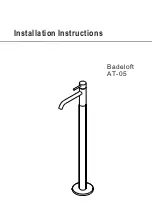
190-00709-05 Rev. D
Garmin G1000 Pilot’s Guide for the Socata TBM 850/900
413
HAZARD AVOIDANCE
or less) and make poor radar targets. In the upper regions of a cell where ice particles are dry (no liquid
coating), target returns are less intense.
Hail shafts are associated with the same radar target return characteristics as tornados. U-shaped cloud
edges three to seven miles across can also indicate hail. These target returns appear quite suddenly along
any edge of the cell outline. They also change in intensity and shape in a matter of seconds, making vigilant
monitoring essential.
OPERATION IN WEATHER MODE
WARNING:
Begin transmitting only when it is safe to do so. When transmitting while the aircraft is on the
ground, no personnel or objects should be within 9.16 feet of the antenna.
CAUTION:
In Standby mode, the antenna is parked at the center line. It is always a good idea to put the
radar in Standby mode before taxiing the aircraft to prevent the antenna from bouncing on the bottom stop
and possibly causing damage to the radar assembly.
When the weather radar system is in the Weather or Ground Map mode, the system automatically switches
to Standby mode on landing.
In Reversionary mode, the weather radar system automatically switches to Standby mode. The system
remains in Standby mode until both displays are restored. In Reversionary mode, the weather radar system
cannot be controlled.
Figure 6-106 Horizontal Scan Display
Radar Mode Scan Line
Antenna Stabilization Status
















































